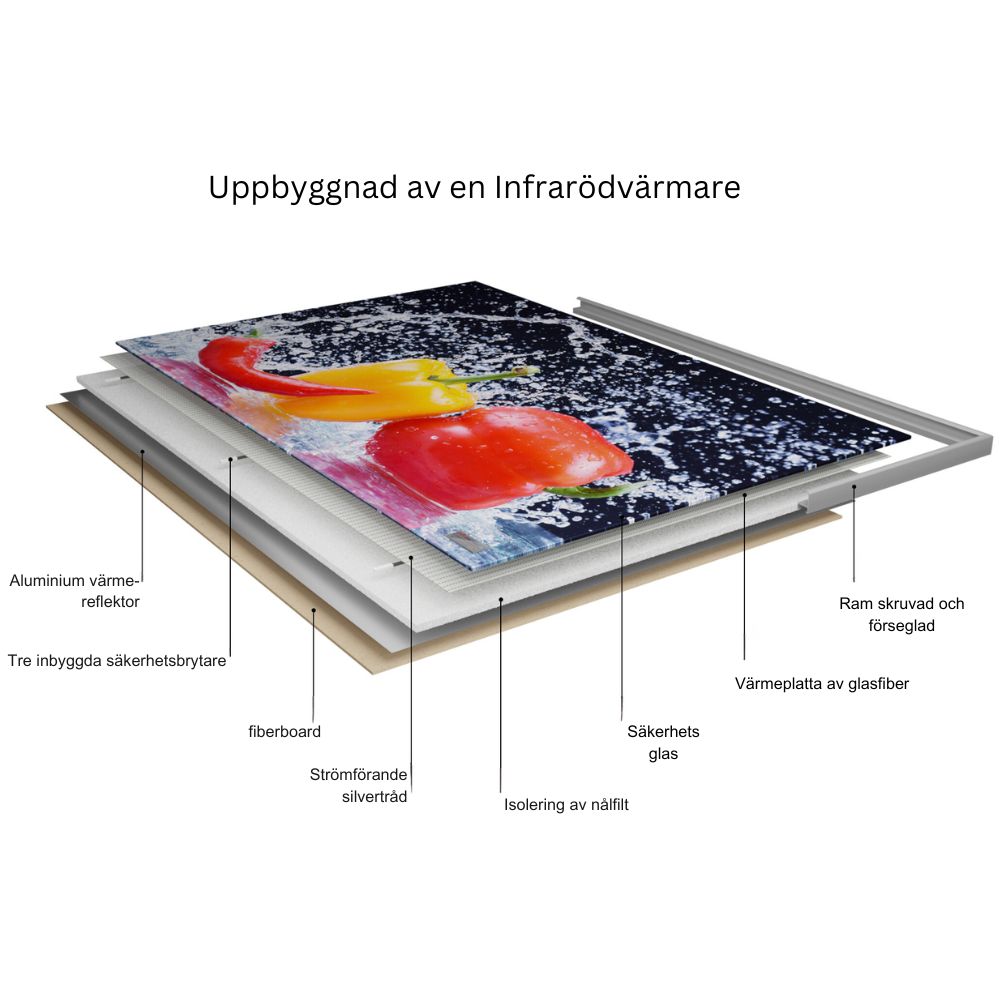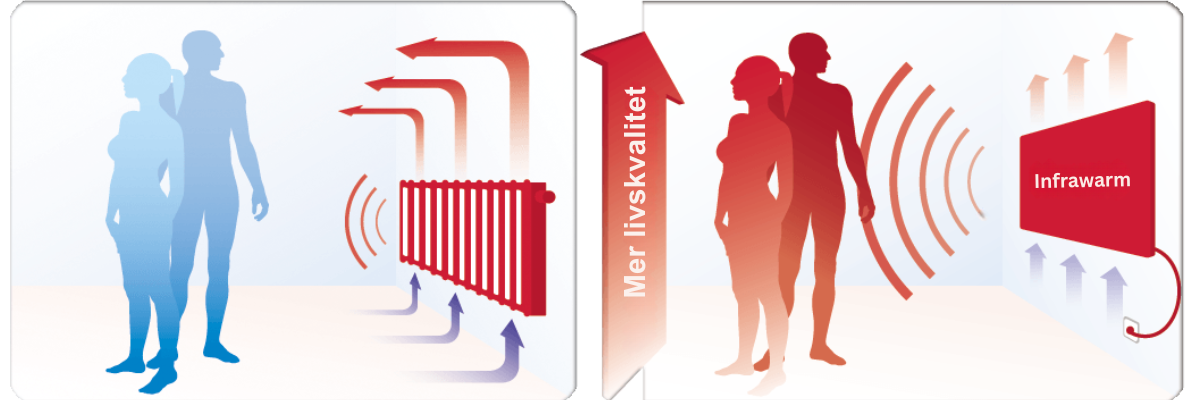
An Excellent Choice: The Benefits of Infrared Heat
They are an elegant and efficient alternative to traditional heating systems and offer many advantages. But how do they work and why should you consider them? Let's dive into the world of infrared heaters and discover the secret.
In a modern world with different heating technologies, the infrared heater is a fascinating innovation that is becoming increasingly popular.
The advantages of Infrared Heating Technology
- efficiency: Infrared heaters convert a high percentage of energy directly into heat, which can lead to lower energy costs.
- Health Benefits: Dust circulation is reduced but also drying of the air, which is beneficial for people with respiratory problems.
- Fast Heat: Infrared heaters heat up rooms faster than traditional heating systems.
- Prevents mold: Thanks to the heating of the walls, moisture development is prevented, which in turn reduces the risk of mold formation.
- Design and Comfort: Modern infrared heaters are often stylishly designed and can be easily integrated into the interior of the room.
- Environmental friendliness: Their efficiency makes them a sustainable and environmentally friendly
alternative
Infrared heaters are therefore a smart choice for those looking for an efficient, healthy and stylish heating solution. They provide an even and comfortable temperature throughout the room. A combination of technology and comfort that can revolutionize the experience of heat in your home.

Innovative Technology Behind Infrared Heaters
The core of infrared heaters consists of electrically conductive material, often carbon wires, which emit infrared radiation when current is applied. This radiation is not transmitted directly to the air, but to objects and surfaces in the room. These objects absorb the heat and then radiate it into the room, creating an even and pleasant warmth.
Direct and Soft Heat Transfer
Unlike traditional heating methods, which primarily heat the air, infrared heaters focus on direct heat transfer. This leads to more efficient heating as the heat is not only transferred directly to objects but also to people staying in the room. The room air is also not dried out to the same extent as with traditional heaters, which creates a more pleasant indoor climate.

